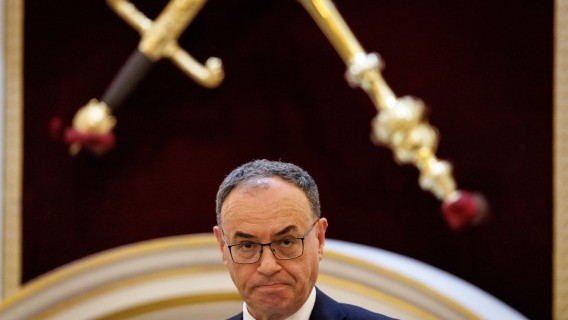Resume af teksten:
Stigende løn- og skatteomkostninger i Storbritannien presser ansættelser og holder inflationen oppe, hvilket skaber en udfordring for Bank of England (BoE). Den seneste Purchasing Managers’ Index (PMI) viser, at disse faktorer har sænket serviceindekset og hæmmer ansættelsesvækst. Samtidig øger de lønomkostninger, hvilket presser priserne opad. Dette dilemma om inflation vs. beskæftigelse skaber grundlag for et potentielt splittet BoE-møde i august, hvor en trevejsstemning kan gentage sig. Jobmarkedets tilstand bekymrer banken, især i forhold til lønvækst, som forventes at falde. Alligevel ser banken kun gradvise ændringer, og større rentenedsættelser ventes først fra august til november. En mærkbar forringelse af jobdata kan dog ændre denne vurdering.
Fra ING:
April’s hike in UK payroll taxes and the National Living Wage are squeezing hiring but keeping pressure on inflation. We think the former is a bigger concern than the latter, but for now the bar for faster Bank of England rate cuts appears high. We expect cuts in August and November

Does higher inflation or lower hiring matter more to the Bank of England? This dilemma is setting the stage for another contentious meeting. Pictured: Governor Andrew Bailey
The latest UK Purchasing Managers’ Index (PMI) perfectly encapsulate the headache the Bank of England faces right now.
Higher payroll taxes and a chunky rise in the National Living Wage back in April are exerting more significant downward pressure on staffing numbers, according to the latest PMI. That helped lower the overall services index from 52.8 to 51.2 in July, and is in line with what the BoE’s own “decision maker” survey has been showing too. Remember, the official payroll figures have also consistently fallen this year, albeit fairly gradually so far.
But the PMI also suggests these policy changes are keeping upward pressure on prices. We’ve seen hints of this in the CPI data, principally in food, where inflation rates have picked up over and above what we’ve seen in the eurozone. Pressure on staffing costs also likely explains the stickiness in hospitality inflation through the spring.
Which of these trends – higher inflation or lower hiring – matters more? This is not a new debate and one that’s far from resolved, setting up another divisive August Bank of England meeting. We wouldn’t be at all surprised to see another three-way vote split, akin to what we saw in May. Back then, officials narrowly voted for a 25bp rate cut, but with two officials voting for no change, and a further two preferring a 50bp cut.
In our view, the Bank should be more concerned about the ominous state of the jobs market and what it implies for wage growth. We suspect private sector pay growth will inch closer to 4% (from 5% now) as the year progresses. Services inflation should come a little lower through the second half of the year too, albeit the concentration of annual price hikes in April means we’re unlikely to see materially better news until next Spring.
And that’s the key – this is a gradually evolving story and suggests that the central debate at the BoE on inflation is unlikely to fully resolve itself imminently. Not enough to convince the majority of officials to rally behind faster rate cuts, anyway.
A more worrisome run of jobs data over the summer could change that. But for now, we think rate cuts in August and November are the path of least resistance, and the bar to moving faster remains set fairly high.
Hurtige nyheder er stadig i beta-fasen, og fejl kan derfor forekomme.



